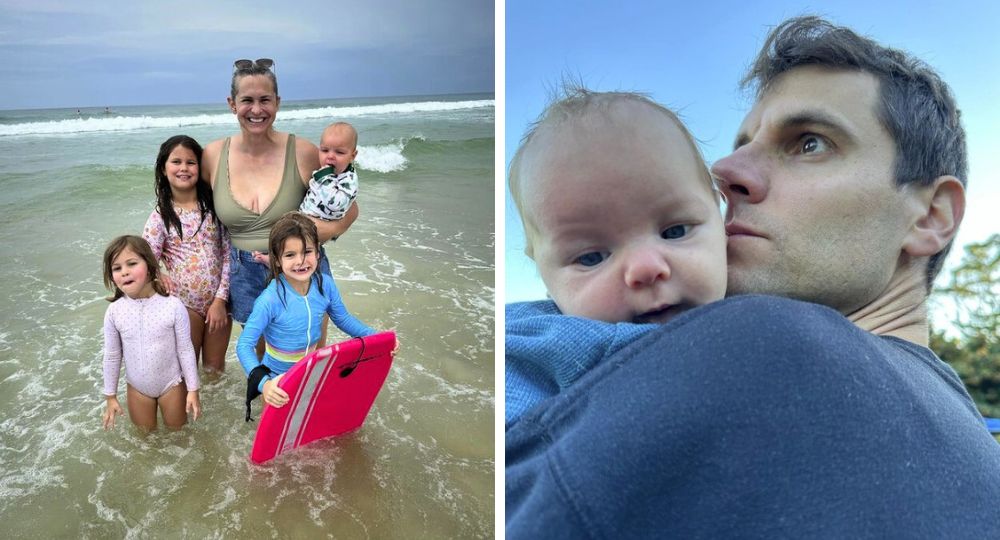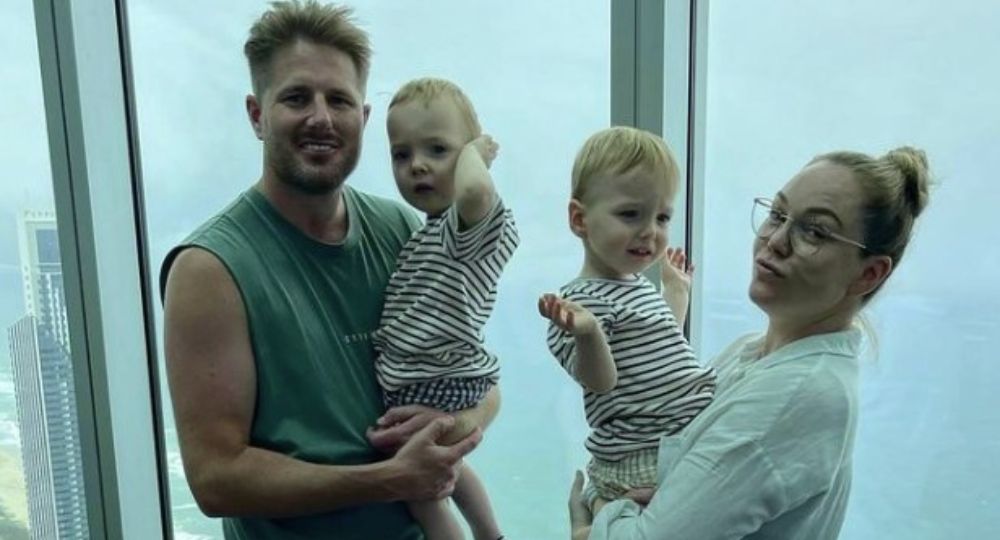Just over two decades since its inception, social media has already changed the world. This change has had both positive and negative effects, whether it’s the Arab Spring protests which were organised over Facebook and Twitter, or the many incidents of cyberbullying that happen on social media. But while adults have a better chance of filtering out the bad, young children are susceptible to the worst of its influence.
In this article, we look at the major social networks and their age restrictions, as well as the risks of exposing children to each platform.
RELATED: Social media can ‘skew’ young people’s sense of self-worth, says Meghan
Social Media: A Multitude Of Choice
Today’s netizens have no shortage of choice when it comes to social media, and every network has its own uses and even its own platform-specific culture.

For example, people who enjoy influencer culture and photography might favour Instagram. Meanwhile, vlog lovers can look up literally millions of YouTube channels out there filled with all kinds of content creators, from amateur musicians to the so-called ‘Maker’ community.
But as with any hugely popular medium of communication, social media always has the potential for negative or abusive interactions which can harm children and affect their judgement and personal growth. To combat this, social media has age restrictions that prevent children under a certain age from creating accounts.
How Old Do You Have To Be To Have A Social Media Account?
The majority of social media platforms have a minimum age of 13 in most territories:
|
SOCIAL NETWORK |
MINIMUM AGE |
EU MINIMUM AGE |
|
|
13 |
16 |
|
YouTube |
13 |
16 |
|
Snapchat |
13 |
16 |
|
|
13 |
16 |
|
|
13 |
16 |
|
|
13 |
16 |
In Europe, most social media platforms have a minimum age of 16 (13 with parental consent) before a user can create an account, due to the General Data Protection Regulation, or GDPR, which came into effect on May 25, 2018.
Facebook is the largest social network in the world, with some 1.59 billion daily active users on the platform. Facebook is one of the most versatile social media platforms ever created – it allows users to write posts, join groups with thousands of people, store and share albums of photos and videos, interact with company pages, and even play games.
Facebook also includes Messenger, a powerful and fully-featured instant messaging platform. Messenger is one of the most popular IM platforms in the world, and allows people from all over the world to write messages to each other, send stickers, and even make voice and video calls.
What Activities Do Children Engage In On Facebook?
Many children use Facebook to interact with their friends and post photos of themselves. They also use Facebook to stay connected with things they love, or look up events to attend in their area.
There are many legitimate uses for Facebook that can benefit children. For example, in class, students often organise Facebook groups to help everyone stay up-to-date with assignments and projects.
What Are The Risks Of Exposure For Children?
Without proper guidance, children may make public posts and overshare personal information, which can lead to them being at risk from malicious people.
Children may also experience cyberbullying on Facebook, and not just from their peers. A child could make a post that goes viral, then people from all over the world could start making fun of them.

How Old Do You Have To Be To Use Facebook?
In most non-EU territories, the age limit to make an FB account is 13. In the EU, it’s 16. We recommend following this guideline to ensure that children are mature enough to deal with the platform.
YouTube
YouTube is the largest video sharing platform on the Internet. It’s the #2 most visited site on the Web, and over a billion hours of video content are watched on the service every day. While it’s not precisely a social network, YouTube allows users to interact in the comments, and follow channels that they like. Users can also create their own channels and upload their own content.

YouTube also allows channels to live stream content, similar to services like Periscope and Twitch.
What Activities Do Children Engage In On YouTube?
Tons of children watch video games being played by streamers on YouTube, most notably games like Fortnite and Minecraft. Other children actually upload their own videos and gain their own followings.
There are also channels dedicated to education, such as Khan Academy and Veritasium, and curious children can learn a lot from these channels just like older generations did from Discovery Channel.
Many young girls enjoy watching beauty vloggers, who give makeup tutorials and skincare advice.
What Are The Risks Of Exposure For Children?
Because a lot of content is designed to be viral and engaging, children are susceptible to YouTube addiction, which can take away time from more productive activities.
YouTube has an age filter for videos that are inappropriate for younger audiences, but there’s nothing really stopping a child from creating an account with a fake age. Children who do this may be exposed to lewd, offensive, or shocking imagery.
There are also videos that pretend to be children’s channels, which include content from popular characters like Peppa Pig and Thomas the Tank Engine, but in reality these videos are highly offensive pieces of satirical content, or even malicious videos with suicide instructions.
How Old Do You Have To Be To Use YouTube?
There’s a 13-year-old minimum age restriction to create a Google account. YouTube has a special app called YouTube Kids designed for those ages 12 and under, but it’s still possible for some bad content to slip between the cracks.
Snapchat
Snapchat is an instant messaging app that allows users to send time-limited messages to each other. They can also share photo or video stories about their daily lives, send and receive photos, take quizzes, and explore content from publishers and creators.

What Activities Do Children Engage In On Snapchat?
Snapchat is mostly used by children for communication with friends. Studies show that the younger generation is switching over from Facebook to Snapchat. Children also love the filters and use them as a form of self-expression.
What Are The Risks Of Exposure For Children?
With the Discover feature, children are exposed to a lot of different, unfiltered Snapchat accounts, some of which may feature age-inappropriate content or advertising.
Snapchat has a feature called ‘Snapstreaks’ which rewards users who regularly exchanging messages with each other. While it seems like a relatively benign feature, Snapstreaks can lead to addictive behaviour. This, compounded with the general addictive nature of many social media platforms, makes it important to manage a child’s time online.
It’s also easy to add strangers to Snapchat and form relationships with them, putting children at risk of being targeted by predators.
How Old Do You Have To Be To Use Snapchat?
You need to be at least 13 years of age to make a Snapchat account. We’d recommend setting an even higher limit unless your child can be trusted to avoid talking to strangers. If your child is exhibiting addictive behaviour, it’s a good idea to control their use until they can manage their time better.
Instagram is the iconic photo and video-sharing social media platform. Back in 2016, over 95 million photos and videos were being posted every day, and that number is definitely even bigger today. Aside from sharing content and browsing their feeds, users can also post to their Stories to update their friends about their day.

What Activities Do Children Engage In On Instagram?
Many children use Instagram to share photos about their lives with their friends, whether on their profile or via Stories. They also follow the accounts of their favourite celebrities and influencers, who often post on a regular basis and offer a daily stream of content.
What Are The Risks Of Exposure For Children?
Instagram doesn’t have a very robust age-gating mechanism for public accounts, and children will often come across inappropriate accounts and posts. A child’s parents may never know that they’re browsing inappropriate content unless they manage to catch it on their feed.
Influencer culture can expose children to consumerism from a pretty young age. Many children may be encouraged to buy the products that their favourite celebrities endorse.
The heavily image-centric nature of Instagram can lead to mental health issues. Instagram tends to show a highly curated and positive outlook for its users, and it may lead to low self-esteem and insecurity, or feelings of inadequacy.
How Old Do You Have To Be To Use Instagram?
Instagram is owned by Facebook, and carries the same 13-year-old age restriction to create an account. However, regardless of their age, it’s important to have a discussion with your child about how social media works and the nature of the images that they see in other people’s lives, to ensure that they don’t develop unhealthy ideas about their self-image.
Twitter is a microblogging social media service that focuses on small-form posts called tweets, which are up to 280 characters long. Many celebrities are on Twitter and post updates regularly; some even use it as a means of interacting with their fans.

What Activities Do Children Engage In On Twitter?
Children follow their friends and their favourite celebs on Twitter. They also use it to talk about their daily lives, keep track of the hashtags that they’re interested in, and may even have it as their source of news.
What Are The Risks Of Exposure For Children?
Twitter has many risks associated with cyberbullying. For one, subtweeting, short for ‘subliminal tweeting,’ is common among teens to subtly bully someone that they don’t like. Another is that a child can be bullied by people who disagree with them if one of their tweets goes viral. Twitter culture can be very unforgiving.
Twitter is a very free and open space, and that comes with the risk of children being exposed to inappropriate images, as well as foul language and even harmful ideas. If your child’s account is public, strangers can easily message them as well.
How Old Do You Have To Be To Use Twitter?
Twitter has a minimum age of 13 to create an account on the site, but we recommend sitting down and having a discussion with your child about the risks of Twitter before allowing them to maintain an account on it.
WhatsApp is the largest instant messaging platform in the world, with 1.5 billion users today. It allows users to securely send private messages, files, videos, stickers, and their location. WhatsApp also allows users to participate in large group conversations. You need a phone number to register a WhatsApp account.

What Activities Do Children Engage In On WhatsApp?
Because WhatsApp only allows you to directly communicate with people who are already on your phone contacts list, WhatsApp is mostly used by children to talk to their friends or schoolmates.
What Are The Risks Of Exposure For Children?
One potential problem with WhatsApp is group conversations, which children often participate in as a primary form of communication. While group chats have their social benefits, they can also contribute to feelings of peer pressure or even promote bullying.
How Old Do You Have To Be To Use WhatsApp?
WhatsApp has a minimum age of 13 to create an account. A child should only have a WhatsApp account at the age that you can trust them with a cellphone.
Conclusion
Social media age limits help ensure that your child can handle each platform and their possible negative influences. But as a parent, you should be the final judge as to whether your child is mature enough to use these platforms, even if they’re past the minimum age.
RELATED: Home and Away’s Sam Frost shares special news
 Getty
Getty









